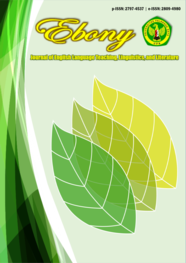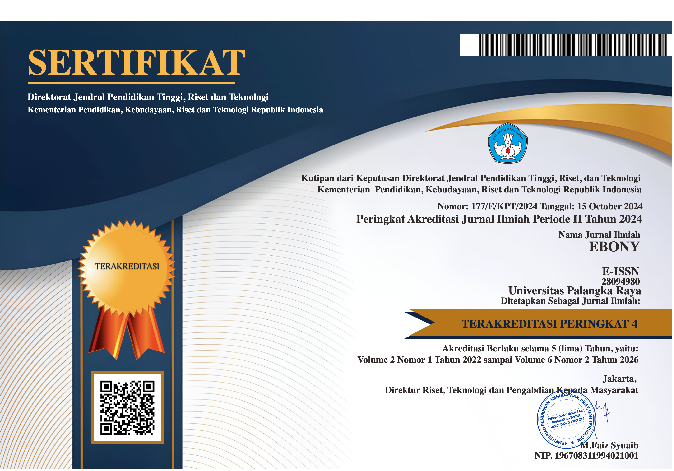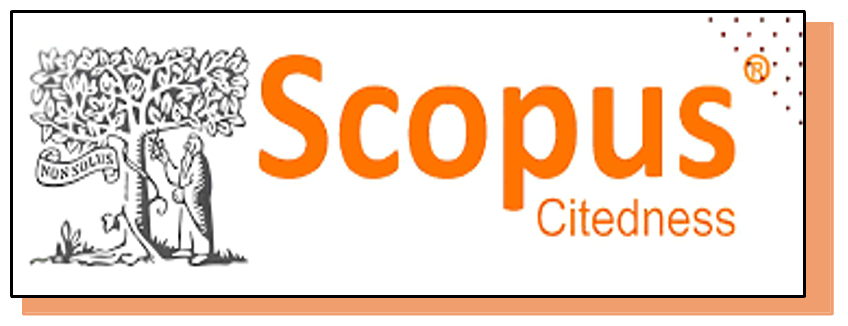Leveraging Waiterio as Learning Media for English for Restaurant: A Case Study
DOI:
https://doi.org/10.37304/ebony.v5i1.17935Keywords:
Waiterio, Learning media, EnglishAbstract
This research investigates rationale, implementation, and pedagogical implications of employing the Waiterio application as a learning media within an English for Restaurant. Employing a purposive sampling methodology, the study involved twenty-six students and one instructor. Data collection was conducted through a case study approach, utilizing observational methods, literature review, interviews, and questionnaires. Qualitative data analysis was employed to interpret the findings. The study revealed that Waiterio application is favored due to its user-friendly interface in comparison to alternative applications. Furthermore, its high degree of flexibility, facilitated by its accessibility across multiple platforms, makes it particularly suitable for diverse learning environments. The research indicated that Waiterio application can be readily integrated into the English for Restaurant curriculum, particularly in facilitating learning related to service sequences. However, limitations were identified, including the requirement for a stable internet connection and the absence of reservation feature. Despite these limitations, student participants unanimously acknowledged the application's ease of use and strongly recommended its utilization within the Food and Beverage Service department. The study concluded that the Waiterio application, owing to its user-friendly interface, can serve as a foundational tool for introducing students to Point of Service applications before transitioning to more comprehensive and complex platforms.
Downloads
References
Antoni, J. (2024). Pengauditan Sistem Informasi Manajemen Dalam Menunjang Pengiriman Makanan Untuk Kemajuan Perusahaan. Jurnal Ilmiah Kohesi, 8(3), 37–49.
Asfaroni, F., & Amalia, R. (2023). Aplikasi Pemesanan Menu Makanan dan Minuman pada K&Y Coffee berbasis Android. SMATIKA JURNAL, 13(01), 32–42. https://doi.org/10.32664/smatika.v13i01.716
Atmaja, R. A. R., & Wibisono, M. B. (2020). Aplikasi Pemesanan Menu Pada Kafe Kopi Galau Berbasis Android. Seminar Nasional Mahasiswa Ilmu Komputer Dan Aplikasinya (SENAMIKA), 1(4), 647–654.
Badan Pusat Statistik. (2024). Berita Resmi Statistik No. 65/09/Th. XXVII.
Cohen, L., Manion, L., & Morrison Keith. (2007). Research Methods in Education (Sixth). Routledge.
Ghozali, A. L., & Iskendang. (2020). Penerapan Aplikasi Point of Sales (Pos) Untuk Menentukan Jasa Anggota Dalam Transaksi Penjualan Pada Koperasi Berbasis Web. Jurnal Ilmiah Ilmu Komputer, 6(1), 27–30. http://ejournal.fikom-unasman.ac.id
Harmer, J. (2015). The Practice of English Language Teaching (3rd ed., Vol. 1). Longman.
Hayes, A. (2024, September 24). What Is Point of Sale (POS)? Https://Www.Investopedia.Com/Terms/p/Point-of-Sale.Asp.
Hung, S.-H., Shih, C.-S., Shieh, J.-P., Lee, C.-P., & Huang, Y.-H. (2012). Executing mobile applications on the cloud: Framework and issues. Computers & Mathematics with Applications, 63(2), 573–587. https://doi.org/10.1016/j.camwa.2011.10.044
Jain, V., & Viswanathan, V. (2015). The Usage and Applications of Mobile Apps. Encyclopedia of Mobile Phone Behavior, 1242–1255. https://doi.org/10.4018/978-1-4666-8239-9.ch100
Kozma, R. B., Belle, L. W., & Williams, G. W. (1991). Instructional Techniques in Higher Education. Educational Technology Pubns.
Kristanto, A. (2016). Media Pembelajaran. Penerbit Bintang Surabaya.
Miles, M. B., Huberman, A. M., & Saldaña, J. (2014). Qualitative Data Analysis: A Method Sourcebook (3rd ed.). SAGE Publications Inc.
Newby, T. J., Lehman, J. D., Russell, J. D., & Stepich, D. A. (2000). Instructional Technology for Teaching and Learning: Designing Instruction, Integrating Computers, and Using Media (2nd ed.). Merrill.
Permadi, K. S. (2023). Program Peningkatan Kompetensi Kepariwisataan Masyarakat. In Pembangunan Pariwisata Berkelanjutan Pasca Covid-19 di Bali . In N. W. P. Rusadi (Ed.), Pembangunan Pariwisata Berkelanjutan Pasca Covid-19 di Bali (1st ed., Vol. 1). Penerbit AVI.
Permadi, K. S., Dewi, P. Y. A., & Budastra, K. (2024). Analisis Kebutuhan Modul Pembelajaran Bahasa Inggris Berbasis Kewirausahaan. Seminar Nasional Hasil Riset Dan Pengabdian (SNHRP) Universitas PGRI Adi Buana Surabaya, 6.
Phongtraychack, A., & Dolgaya, D. (2018). Evolution of Mobile Applications. MATEC Web of Conferences, 155, 01027. https://doi.org/10.1051/matecconf/201815501027
Rifah, L. R., Shanti, M., & Sabilah, F. (2021). The needs of English for entrepreneurship students in the university level: The entrepreneurial role models’ prespective. KEMBARA Journal of Scientific Language Literature and Teaching, 7(2), 297–306. https://doi.org/10.22219/kembara.v7i2.18187
Roinah. (2022). Penggunaan Bahasa Inggris Pada Masyarakat Ekonomi Asean di Masa Pandemi Covid-19. Jurnal Cakrawala Ilmiah, 1(12), 3625–3634. https://doi.org/https://doi.org/10.53625/jcijurnalcakrawalailmiah.v1i12.2445
Sugiyono. (2013). Metodologi Penelitian Kuantitatif dan Kualitatif Dan R&D. Alfabeta.
Wirya, I. M. S., Widiantara, I. G. A. B., & Darma Susila, I. M. G. (2023). Application of The OPERA Information System in Hotel Reservations to Increase The Productivity of The Front Office Department (Case Study at the Grand Hyatt Hotel Bali). Jurnal Manajemen Pelayanan Hotel, 7(2), 744. https://doi.org/10.37484/jmph.070209
Downloads
Published
How to Cite
Issue
Section
License
Copyright (c) 2025 Komang Satya Permadi, Nyoman Canestra Adi Putra, Ni Wayan Putri Widia Artayani

This work is licensed under a Creative Commons Attribution 4.0 International License.











